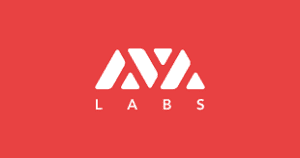If you’ve been watching the crypto markets, you’ve likely noticed how the price for AVAX is soaring. But what exactly is AVAX? What is this crypto used for, and what is the Avalanche platform?
In this post we’ll take a look at what AVAX is, its creation and history, and its promising future as a potential “Ethereum killer.”
Terms to know
Consensus protocol
A consensus protocol is the way that nodes reach an agreement on which transactions are valid and can be added to the blockchain. The Avalanche protocol is unique from the other protocols that came before it because it allows for a completely permissionless, open system where anyone can become a node. This allows it to scale quickly and have thousands of nodes participating.
It does this through a validation system known as “network gossiping,” which is where the nodes on the blockchain repeatedly query each other about the validity of a transaction before adding it to the chain. If enough nodes agree, then that answer will become official and added to the blockchain.
Subnets
Subnets, or subnetworks, make up the architecture of the Avalanche platform. Avalanche is essentially a “platform of platforms.” Each subnet has its own blockchain and can even have its own separate token, though AVAX is still required to set it up. Subnets can be public or private and proof-of-stake or proof-of-work. Validators can verify transactions on as many or as few subnets as they like.
What is AVAX?
 AVAX is one of the newest cryptos in the market, and it has gained a lot of traction recently. This is because the company behind the coin, Ava Labs, has developed an innovative platform called Avalanche, which is customizable, scalable, and interoperable in a way that no other platform currently is.
AVAX is one of the newest cryptos in the market, and it has gained a lot of traction recently. This is because the company behind the coin, Ava Labs, has developed an innovative platform called Avalanche, which is customizable, scalable, and interoperable in a way that no other platform currently is.
In part, this is due to Ava Labs’ Avalanche consensus protocol. This protocol was developed by an anonymous group and implemented by Ava Labs.
The Avalanche protocol runs on a proof-of-stake system and is unique from the other protocols that have come before it because it utilizes “network gossiping” to verify transactions before they are added to the blockchain. This system allows Avalanche to have incredibly fast transaction processing times, as well as the ability to scale to thousands and potentially millions of nodes on its networks.
Ava Labs has used this protocol combined with the unique subnet architecture of their Avalanche platform to create an innovative system that has a lot of potential for disrupting the industry.
So where do AVAX tokens fit in? AVAX tokens are the native currency of the Avalanche platform. There is a supply cap of 720 million AVAX coins, with 360 million already having been released. The other 360 million will be released at fixed intervals over decades. This supply cap makes AVAX a deflationary asset.
AVAX is valuable because aside from its scarcity, it is used for several actions that keep the Avalanche platform running. These include launching new subnets, making transactions, paying fees, and keeping the platform secure (through staking).
Staking AVAX
 Staking AVAX is an important part of the Avalanche platform because just like in any other proof-of-stake system, it serves to validate the blockchain and make sure it’s secure and working properly.
Staking AVAX is an important part of the Avalanche platform because just like in any other proof-of-stake system, it serves to validate the blockchain and make sure it’s secure and working properly.
Currently, 2,000 AVAX is required to participate in staking. The rewards earned by the validator are proportional to how much AVAX they stake, and how long they have it staked for. Rewards are also based on the validator’s rate of correctness and uptime. Validators must maintain an uptime of at least 60% if they want to receive rewards.
It’s important to note that Avalanche doesn’t slash the staked funds of validators who fall beneath this amount (or make any other mistake); instead, they simply won’t be rewarded.
Crypto staking allows validators to have governance in the system and help decide what direction to take the Avalanche platform. For example, they can decide the rate at which AVAX reaches its supply cap.
AVAX in fees and transactions
Avalanche utilizes a different system when it comes to using AVAX in their transactions and fees. For example, fees are not earned by the validators. Instead, they are “burned,” a process that removes them from circulation. This helps to regulate the value of AVAX tokens by reducing supply and keeping inflation down as new cryptocurrency coins are created.
Avalanche fees also vary by transaction. Creating new subnets usually has the highest fees, while making simple transactions has the lowest. In addition, subnets can have their own token, so transactions that occur within subnets can be paid with that token instead of AVAX.
Also, how much is charged in fees isn’t determined by whoever issues the transaction. Instead, it is determined by the number of users currently on the network. This means that more network congestion will result in higher fees.
Key milestones in Avalanche’s history
 Avalanche was created in 2018 by a computer science professor named Emin Gün Sirer. Sirer, along with a team with an extensive background in computer science, economics, finance, and law, worked to create the blockchain platform, using the Avalanche protocol as its base.
Avalanche was created in 2018 by a computer science professor named Emin Gün Sirer. Sirer, along with a team with an extensive background in computer science, economics, finance, and law, worked to create the blockchain platform, using the Avalanche protocol as its base.
The Avalanche protocol was outlined in a white paper by an anonymous group called Team Rocket.
Ava Labs worked on Avalanche for two years before it was made public in July 2020 in order to sell some AVAX tokens to raise money for the platform.
While the initial campaign was set to be 15 days, they were able to sell out of their tokens and raise $42 million in only four hours.
A few months later in September 2020, the Avalanche platform officially launched, though it wasn’t until 2021 that the platform began to quickly gain a lot of popularity in the DeFi world.
In November 2021, Ava Labs announced a partnership with Fortune 500 company Deloitte to use the Avalanche platform to create more efficient disaster relief platforms for FEMA. This move resulted in the price of AVAX skyrocketing and the coin breaking into the top 10 cryptocurrencies in the market.
The future of Avalanche
With major investors like Andreessen Horowitz, Initialized Capital, and Polychain Capital, as well as the Deloitte deal, it’s clear that AVAX has a lot of potential to become the top smart contracts platform over Ethereum.
In fact, Avalanche has been called an “Ethereum killer.” According to Ava Labs itself, Avalanche is the “fastest smart contracts platform in the blockchain industry.”
Currently, Avalanche can process 4,500 transactions per second, making it much faster than Etereum’s 15 per second. In addition, Avalanche has lower “gas,” or transaction, fees.
And while Ethereum’s 2.0 upgrade is expected to address these concerns, the update has not taken effect yet and won’t be fully implemented until next year.
Even though Avalanche is a newer crypto with less name recognition than Ethereum, its smart contract technology has already made some wonder if it will unseat Ethereum as the dominant player in the DeFi industry.
About the Author

Michael Hearne
About Decentral Publishing
Decentral Publishing is dedicated to producing content through our blog, eBooks, and docu-series to help our readers deepen their knowledge of cryptocurrency and related topics. Do you have a fresh perspective or any other topics worth discussing? Keep the conversation going with us online at: Facebook, Twitter, Instagram, and LinkedIn.


